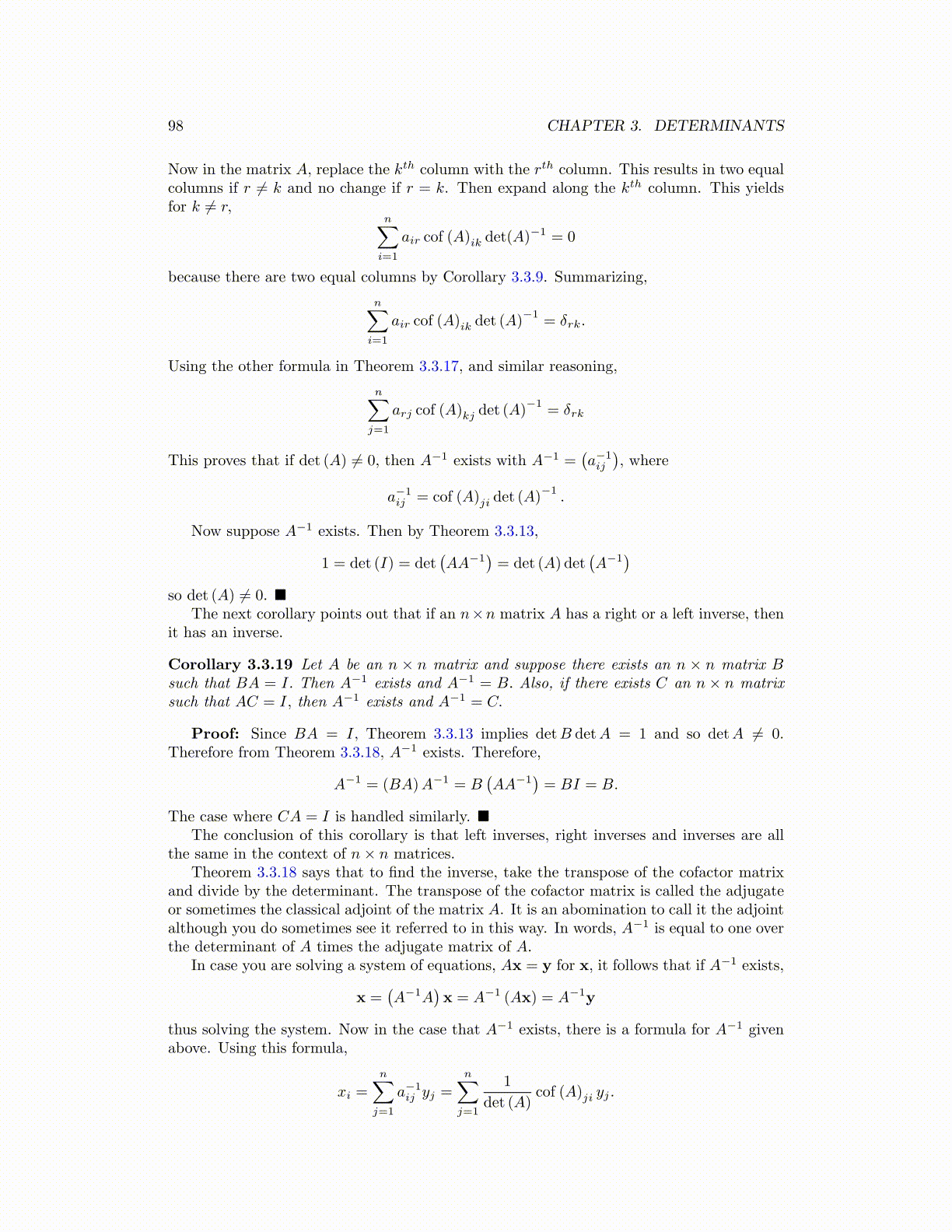
98 CHAPTER 3. DETERMINANTS
Now in the matrix A, replace the kth column with the rth column. This results in two equalcolumns if r ̸= k and no change if r = k. Then expand along the kth column. This yieldsfor k ̸= r,
n∑i=1
air cof (A)ik det(A)−1 = 0
because there are two equal columns by Corollary 3.3.9. Summarizing,
n∑i=1
air cof (A)ik det (A)−1
= δrk.
Using the other formula in Theorem 3.3.17, and similar reasoning,
n∑j=1
arj cof (A)kj det (A)−1
= δrk
This proves that if det (A) ̸= 0, then A−1 exists with A−1 =(a−1ij
), where
a−1ij = cof (A)ji det (A)
−1.
Now suppose A−1 exists. Then by Theorem 3.3.13,
1 = det (I) = det(AA−1
)= det (A) det
(A−1
)so det (A) ̸= 0. ■
The next corollary points out that if an n×n matrix A has a right or a left inverse, thenit has an inverse.
Corollary 3.3.19 Let A be an n × n matrix and suppose there exists an n × n matrix Bsuch that BA = I. Then A−1 exists and A−1 = B. Also, if there exists C an n× n matrixsuch that AC = I, then A−1 exists and A−1 = C.
Proof: Since BA = I, Theorem 3.3.13 implies detB detA = 1 and so detA ̸= 0.Therefore from Theorem 3.3.18, A−1 exists. Therefore,
A−1 = (BA)A−1 = B(AA−1
)= BI = B.
The case where CA = I is handled similarly. ■The conclusion of this corollary is that left inverses, right inverses and inverses are all
the same in the context of n× n matrices.Theorem 3.3.18 says that to find the inverse, take the transpose of the cofactor matrix
and divide by the determinant. The transpose of the cofactor matrix is called the adjugateor sometimes the classical adjoint of the matrix A. It is an abomination to call it the adjointalthough you do sometimes see it referred to in this way. In words, A−1 is equal to one overthe determinant of A times the adjugate matrix of A.
In case you are solving a system of equations, Ax = y for x, it follows that if A−1 exists,
x =(A−1A
)x = A−1 (Ax) = A−1y
thus solving the system. Now in the case that A−1 exists, there is a formula for A−1 givenabove. Using this formula,
xi =
n∑j=1
a−1ij yj =
n∑j=1
1
det (A)cof (A)ji yj .